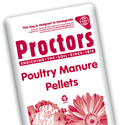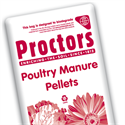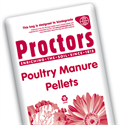Moss is the bane of many lawn-lovers, ruining the look of our beloved grass and often indicating underlying problems with the growing conditions in our gardens. The good news is, if your lawn is blighted by moss, taking the right action now should not only solve the problem, but also prevent it recurring in future.
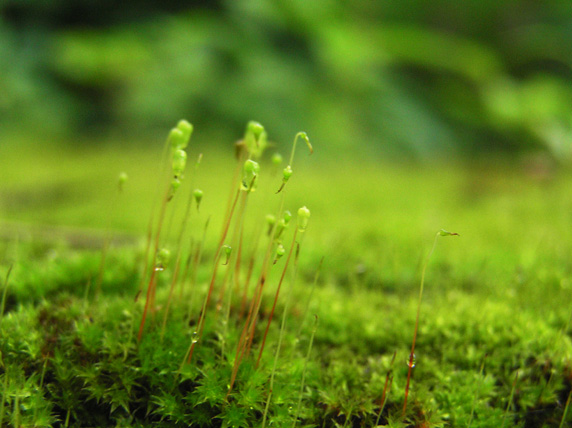
PHOTO BY ELROY SERRAO / CC BY
Removing moss
If you want to do things the old fashioned way, then your best bet is to remove the moss by scarification. This essentially involves physically ripping the moss out of the ground while leaving the surrounding grass in place. This can be done either manually with a spring-tine rake (sometimes handily referred to as a moss rake) or else using a mechanical scarifier.
The alternative is to go down the chemical route. A product such as our Lawn Feed, Weed and Moss Killer (7-2-3) with a high sulphate of iron content will not only kill moss for you, but also feed your lawn, helping the grass to fill the empty spaces left by the dead moss. Spring and early autumn are the ideal times to treat moss in this way and it should take two to three weeks to see results. After this time the moss should turn black, allowing you to easily rake it up and make room for lots of healthy new grass to take its place.
Whichever removal method you use, it is advisable spread fresh grass seed on the affected areas afterwards to help promote new growth.
Moss prevention
There are five main factors that encourage moss growth on a lawn:

PHOTO BY BRIAN BOUCHERON / CC BY
Cutting grass too short
Cutting your grass too short results in “scalping” – where there is too little leaf left for the grass to grow properly, meaning it will grow extremely slowly or else die entirely. This gives moss the chance to take root and begin to spread.
If you think you might be cutting your grass too short, try increasing the height of your mower and allowing your grass to grow longer (at least 2cm is advised). Alternatively, if you’re really keen on short grass, species like bentgrass and red fescue are more tolerant of a lower cutting height. That would mean replacing your entire lawn though, so you would need to give this some serious thought.
Compact soil
If soil is too compact, it will drain poorly and not hold enough air. Both of these prevent your grass from growing healthy roots, leading to poor quality of dead grass that can easily be displaced by moss.
Compact soil can be addressed by aerating i.e. making lots of holes in the lawn’s surface. This can be done manually with a sod-coring tool, or with an aerating machine. The lawn should then be dressed with lawn sand to improve the soil’s overall texture.
Poor soil nutrition
Moss will generally thrive on soil that is nutritionally poor whereas grass will not. This means one of the most effective ways to control moss is by ensuring that your lawn in regularly fertilised. To achieve this you have a few different options.
Lawn sand is a popular choice for improving soil nutrition and has the added advantage that it will kill some moss for you (although it is not as effective as a specially formulated moss killer). As previously mentioned, a specially formulated combination fertiliser/weed and moss killer will produce effective short term results in improving your soil nutrition while killing weeds and moss.
For a long term fix, however, your best bet is to apply a spring/summer lawn feed and autumn/winter lawn feed at the appropriate times. This should have a significant impact on the quality of your soil and will promote healthy grass growth and this prevent moss from gaining a foothold.
Heavy shade
Grass needs regular sunlight to thrive, so if you try to grow a lawn in heavy shade you will either end up with weak grass or bare patches where no grass will grow. Moss, which is perfectly happy in the shade, will then take over.
To resolve this, you have two basic options. First, you can try to reduce the amount of shade, by removing the source. This may be relatively easy if the problem is being caused by tree or bushes, which can be pruned back or thinned out to let more light through, but will be more challenging if the shade is caused by something more permanent, like a building.
Your second option is to reseed with shade tolerant species of grass. This generally means some variety of fescue, with red fescue being one of the most popular, although how successful reseeding will be depends on just how shaded the area in question is.
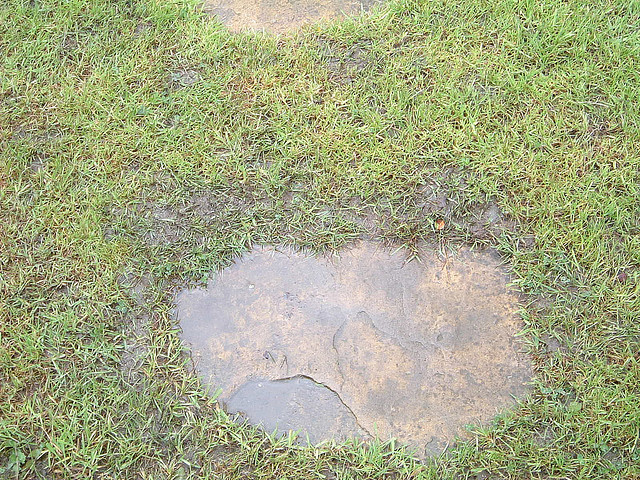
PHOTO BY JANET 59 / CC BY
Poor drainage
If your lawn is failing to drain adequately the underlying soil can become waterlogged. Too much water in the soil displaces the air needed for healthy root growth and can lead to weak or dead grass. Moisture-loving moss will quickly capitalise on this and gain a foothold.
It may be possible to fix a small drainage problem with simple aeration, if the problem is being caused by compacted soil. If the problem is more serious though, for example, if you have heavy clay soil that always drains poorly, you may need to take more serious remedial action.
You might have to look at adding drainage either at the edges of the lawn or under the lawn (which will probably require you to hire a specialist drainage company). Alternatively, your best solution could be to dig up your entire lawn and a good portion of the soil underneath and work in a load of organic matter and some good quality top soil. Neither of these approaches are likely to be cheap, but in cases of seriously bad drainage you might have no choice.
For more information about dealing with moss, or any other queries about lawn care, give us a call on 0117 311 1217 or send us a message with our online contact form.














